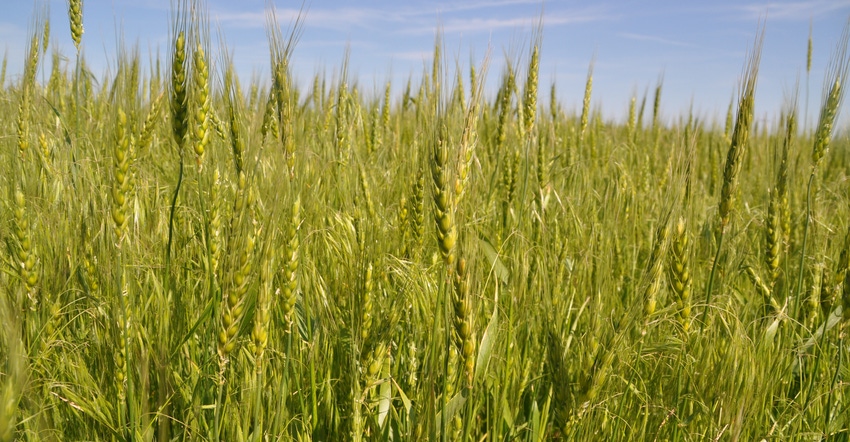
The winter wheat crop is about a week behind, says Terry Wyciskalla, Nashville, Ill., crop consultant and soil fertility specialist, adding that he doesn’t expect to see combines roll until roughly June 10. Despite the delayed crop, the May 10 USDA Crop Progress report forecasts a 9% increase in harvested wheat acres in Illinois, coming in at 510,000 acres, and a 4% increase over last year’s production, at 37.2 million bushels. Average yields are expected to drop by 3 bushels from 2017 to 73 bushels per acre.
Wyciskalla says it’s too soon to tell if the crop will meet expectations. Pollination started on field edges the week of May 7, and the forecast warmer temperatures, especially at night, will push the crop forward.
“If we get some warm evenings, it will really come on fast, but we still have a long way to go before harvest,” he says, adding that farmers are focusing on herbicide and fungicide applications.
Top threats
Nathan Kleczewski, University of Illinois plant pathologist, says his tour through southern Illinois wheat fields in early May revealed low disease pressure. Kleczewski found no stripe rust in the 26 fields he scouted and heard two reports of isolated outbreaks. Septoria leaf blotch, or speckled leaf blotch, was found in several southwestern fields, but the disease doesn’t usually reach the flag leaf or green tissues that impact grain fill and yield.
“Foliar diseases that don’t reach these tissues are typically not a major concern,” Kleczewski says, adding that some fields showed light powdery mildew pressure, but not enough to cause alarm.
“We’re at the point now that farmers will be spraying soon anyway,” he says, and fusarium head blight is the top priority. The fungus that causes FHB, or head scab, favors warm, wet, humid conditions, and fungicide applications can help with management.
“Head scab can be suppressed with a fungicide, but it needs to be the right fungicide, and it needs to be applied correctly,” Kleczewski says. “Fungicides won’t work for head scab like for foliar diseases,” he notes. Farmers should not expect full control, but 40% to 50% suppression, he says.
Fungicides containing strobilurins are not recommended for FHB, but Prosaro, Caramba or Proline will suppress FHB when applied during the early flowering stage.
Fungicides do knock out other wheat disease threats, such as septoria, stagonospora and powdery mildew, often with 80% to 100% control.
Do you need a fungicide?
Rain mixed with flowering and warm temperatures could mean trouble, but Kleczewski recommends using the FHB Risk Tool to make final fungicide decisions. “Commodity prices aren’t great. There’s little or no foliar disease out there, and if conditions aren’t too conducive for scab, do you really need a fungicide?” he asks. “You could really save costs by using the website.”
Farmers who choose to apply a fungicide may benefit from a slightly later application, Wyciskalla says, which strategically places the two-week residual coverage. “Some think it’s better to spray a little too late than a little too early,” he says. “If we spray a tad bit on the late side, it gives longer protection versus putting it on early and having it degrade to the point where it’s not offering protection.”
Protecting the wheat crop against head scab and yield loss is important, but Kleczewski wants farmers to think beyond that. “We’re managing vomitoxin,” he says.
Why is that important? Read this story for more on vomitoxin, or DON, and integrated FHB management.
About the Author(s)
You May Also Like




